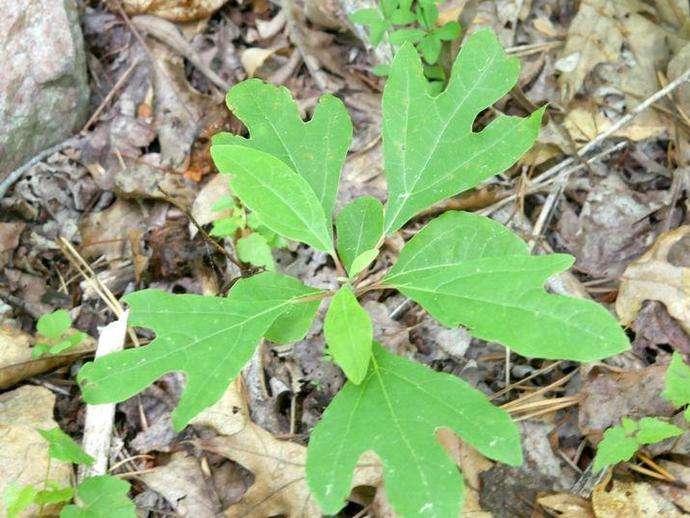May 6, 2021
Ben is on vacation the rest of this week, so we're reaching into the archives for today's #BenInNature update presented by our friends at Carter Bank & Trust! The following post was originally published on June 19, 2020.
White sassafras (Sassafras albidum) is native to the eastern U.S., and it's long been a very important tree for a wide variety of commercial uses. When the English first came to America, they exported sassafras to Europe where it was converted into a drink called "saloop" that was supposed to have medicinal qualities. Sassafras quickly became touted as a cure-all for a wide variety of maladies.
The bark of sassafras contains safrole oil, an aromatic chemical that was used as an additive in everything from toothpaste to root beer until the FDA banned its use in 1960. It's also used in the production of the psychoactive drug MDMA! (I don't know the rest of the ingredients, nor would I share the recipe if I did.) Because the English colonists loved sassafras so much, and because the safrole oil could only be harvested from each tree once, a large number of sassafras trees were culled. In 1602, colonists sent a one ton shipment of sassafras back to England; by 1626, they couldn't even meet a 30 pound quota!
One unusual quality of sassafras is that it has three different distinct leaf shapes, all of which can appear on the same branch! In the attached photo, you'll notice that this small sassafras has leaves with one lobe, two lobes, and three lobes. Keep an eye peeled when you're on a nature walk, as the unique leaf shapes make sassafras fairly easy to spot.
ABOUT #BenInNature
Social distancing can be difficult, but it presents a great opportunity to become reacquainted with nature. In this series of posts, Administrator of Science Ben Williams ventures outdoors to record a snapshot of the unique sights that can be found in the natural world. New updates are posted Monday - Friday, with previous posts highlighted on the weekends. This series of posts is made possible thanks to the support of VMNH Corporate Partner Carter Bank & Trust (www.cbtcares.com).
NATURE PHOTO IDENTIFICATIONS
If you discover something in nature that you would like help identifying, be sure to message us right here on Facebook with a picture (please include location and date of picture) and we'll have our experts help you identify it!

 Hours & Admissions
Hours & Admissions Directions
Directions

